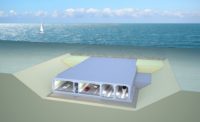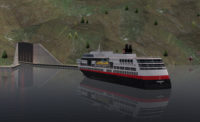Planners of the $6.6-billion Femern Belt road and rail link between Denmark and Germany have rejected a bridge option in favor of a 18-kilometer-long sunken-tube tunnel. Government confirmation of the choice is expected next month. The process of prequalifying contractors is scheduled to start later in 2011.
Running between Puttgarden, on Germany’s Fehmarn Island, and R�dby, on Lolland Island, Denmark, the project will provide a new route from Scandinavia to Central Europe.

LUNDHUS
Following extensive studies by two international design teams, officials at the project developer, Denmark’s Femern A/S, Copenhagen, say a tunnel poses fewer construction and operational risks than a multispan cable-stayed bridge.
Due to steelwork likely to be imported from East Asia, the officials believe the delivery risks for a bridge would be higher than for a locally sourced concrete tunnel. Further, they cite environmental and navigation advantages of a tunnel approach.
Building a sunken tunnel in the busy Femern Belt waterway will be challenging, say officials. However, unlike a bridge, an immersed tunnel will not entail as many technical operations that push the limits of what has been done before.
Financially, “there is very little difference between the two projects,” say officials. The tunnel is estimated to cost $6.6 billion (5.1b), which is only 2% less than the estimated cost of the bridge, at 2008 prices.
However, a tunnel would take six months longer to built, at 6.5 years, and its operational costs would be “slightly” higher. Femern A/S forecast the payback time for both options to be around 30 years.
The tunnel proposal, which has been developed beyond the conceptual stage, will form the basis of the construction contract bidding, says Leo Larsen, managing director of Femern A/S. This summer, he replaced Peter Lundhus, who is now technical director for the firm.

LARSEN
Because of the permitting process, the owner must specify the design in some detail. However, adds Larsen, “We will go as much as we can for design/build.” He expect the project to be divided into four or five large packages; because of the scale of the work, contractors will have to form joint ventures.
The tunnel option was developed by Ramb�ll Denmark A/S, Copenhagen, with Arup Group Ltd., London, and Nijmegen, Netherlands-based Tunnel Engineering Consultants. Locally based Cowi A/S and Germany’s Obermeyer Planen + Beraten GmbH., Munich, worked on the bridge.
The final choice will be sanctioned by legislation in Denmark, possibly in summer 2013. Construction would start later that year or early the next. Denmark is funding and developing the international section of the link.









Post a comment to this article
Report Abusive Comment